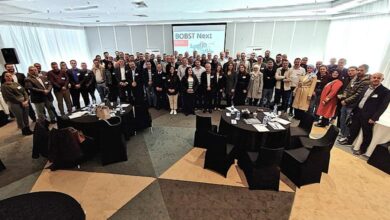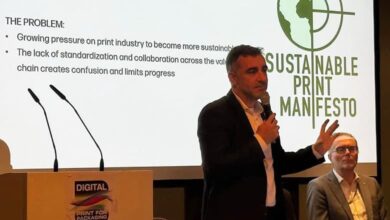Dubai International Print Award Expands to Levant Region
The 2013 edition of the Dubai International Print Award is set to get bigger and better than before. The event, which is organized by the Printing and Publishing Group (PPG) in association with Dubai Chambers, will be held at the Madinat Jumeirah (Johara Ballroom) on April 9. The organizers of DIPA are expecting an increase in award entries from last year, where over 900 entries were received from 8 countries.
A new category has been added for DIPA 2013, which seeks to find leadership in the flat-bed digital inkjet category. As part of this addition, flat-bed printer manufacturers will now be able to participate and demonstrate their Point of Sale free-standing unit printing materials.
Chairman of the Printing and Publishing Group, Mazen Haj, said, “We’re pleased to announce the upcoming 2013 Awards. Dubai International Print Award is unique because it is the only print award in the GCC and has effectively positioned itself as the definitive platform from which to gauge the quality and excellence of the region’s printing and publishing industry, and has done this for the seventh consecutive year.”
“There are some exciting additions to DIPA 2013, such as the new venue and date, which allows printing professionals to attend the awards during their visit to the Gulf Print & Pack 2013 exhibition, the addition of a new award category, and the inclusion of entries from the Levant market,” Mazen Haj continued.
“We’re looking forward to a bigger and better Dubai International Print Award event in 2013, and we’d like to thank all of our sponsors, especially those who have supported us from the inception of the Awards, for making all this possible,” concluded Mazen Haj.
Mazen El Tibi, Sales & Marketing Director for Heidelberg Middle East FZCO, Gold Sponsors of DIPA, said: “DIPA 2013 will bring us to the 7th Dubai International Print Award. In the past, we have seen a great improvement in the innovation and printing techniques in the region. We at Heidelberg, in view of the serious commitment of the printers in the region and outside to this special event, have as always been supportive and we continue to ensure our region’s place in the world arena of print; therefore we maintain the gold sponsorship of DIPA.”
Mahdi Al Mazim, Director, Customer Service Centers, Dubai Chamber of Commerce and Industry, said: “We are pleased to continue our long relationship with the Dubai International Printing Award organised by the Print and Publishing Group, which is one of the 26 active business groups operating under the umbrella of Dubai Chamber and is firmly behind the success of the award over the years.
The annual award, which caters to our strategic objectives of supporting the development of business and promoting Dubai as an international business hub, is a significant motivation for publishing companies in the country. It encourages all printing establishments to compete for quality excellence and receive their fair share of recognition in the industry, locally and regionally. We wish this seventh round of the award all the success.”
The Dubai International Print Awards 2013 are sponsored by Heidelberg as Gold Sponsors and Khaleej Times as Media Partner. Canon, Giffin Graphics, Prestige Graphics, Print Week, Gulf Print and Pack (Tarsus Group) and Xerox Emirates are the Silver Sponsors. Kodak, Age Graphics and Gimpex are Bronze Sponsors. This year’s categories include POSM Free Standing Unit, which falls under the Flat Bed Digital Inkjet category.





